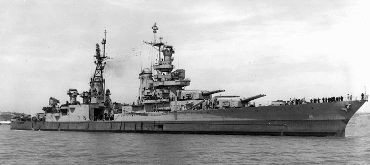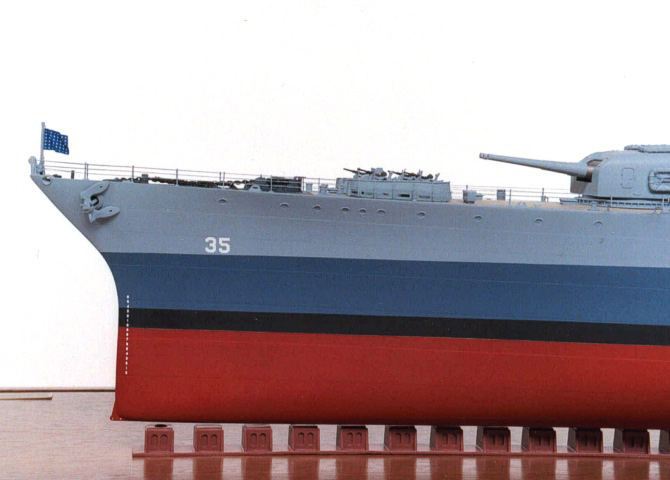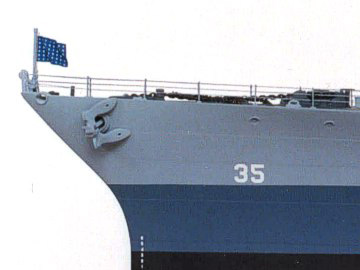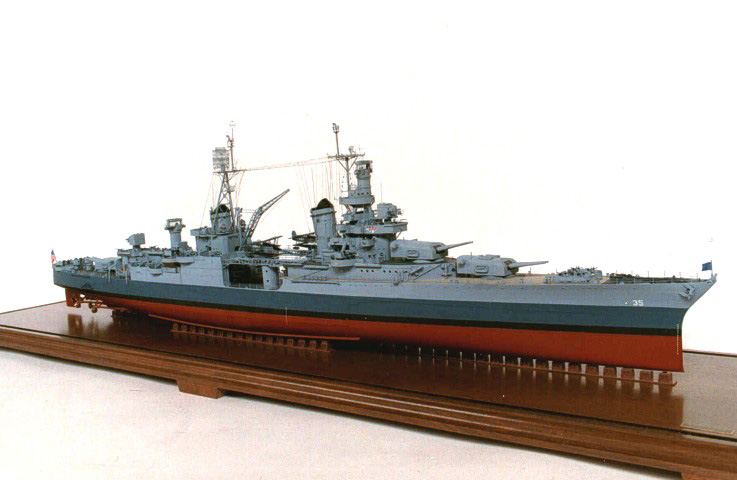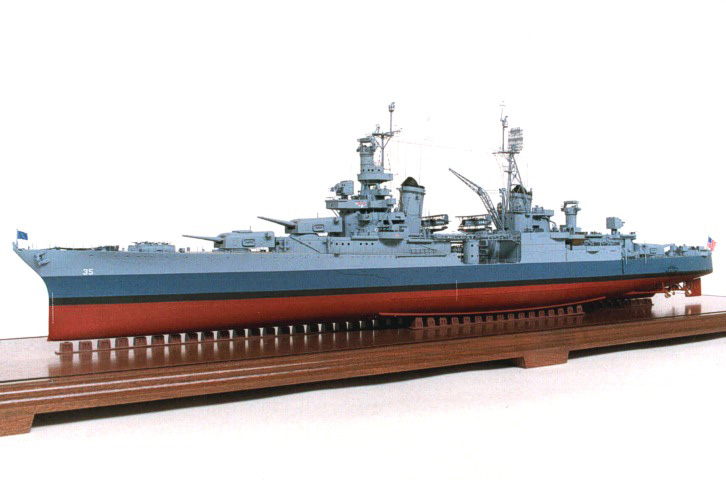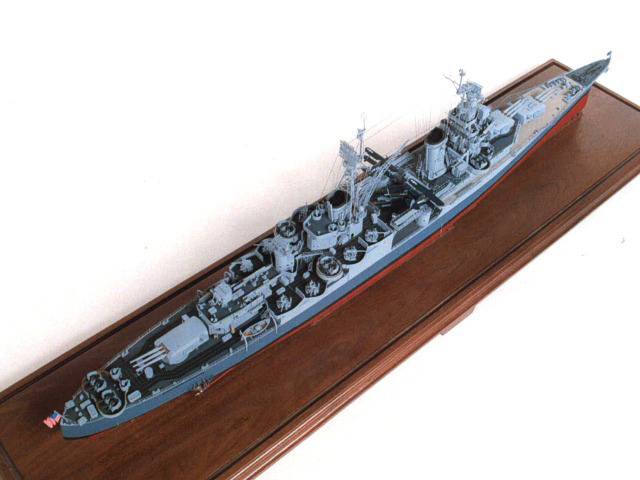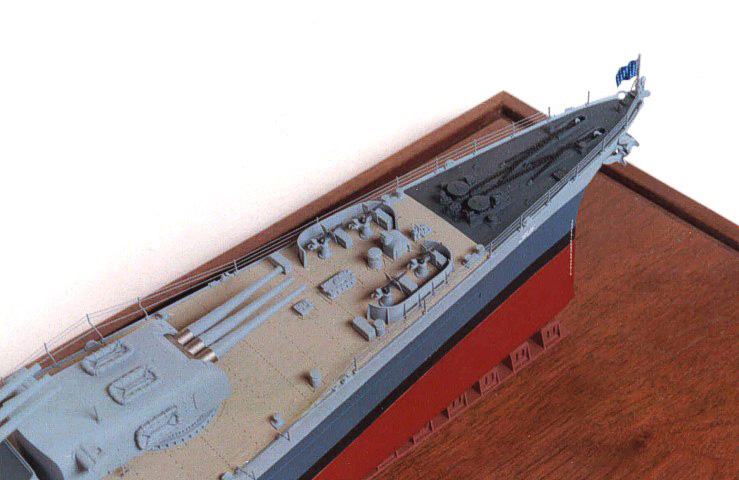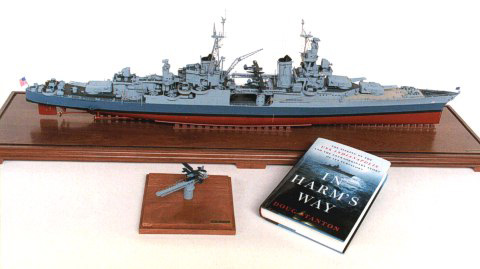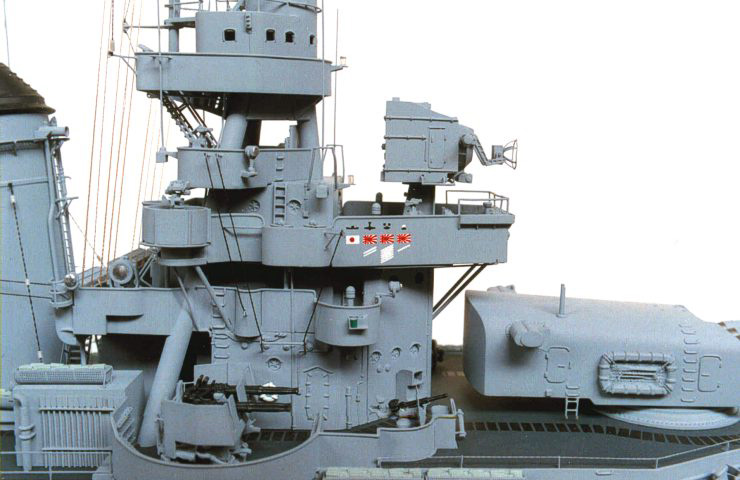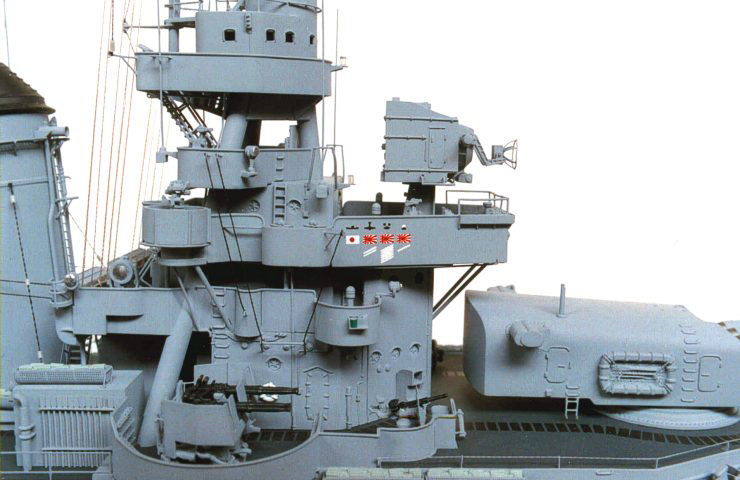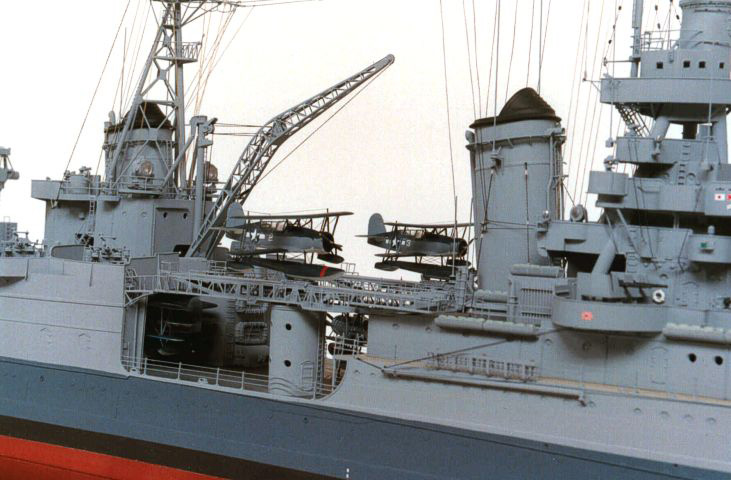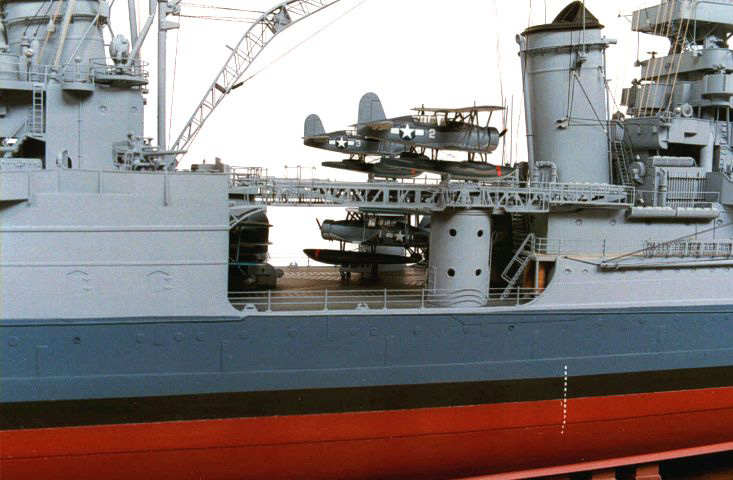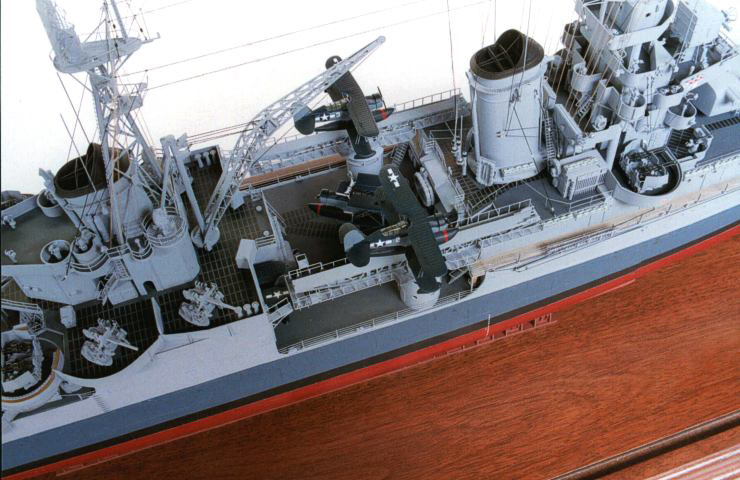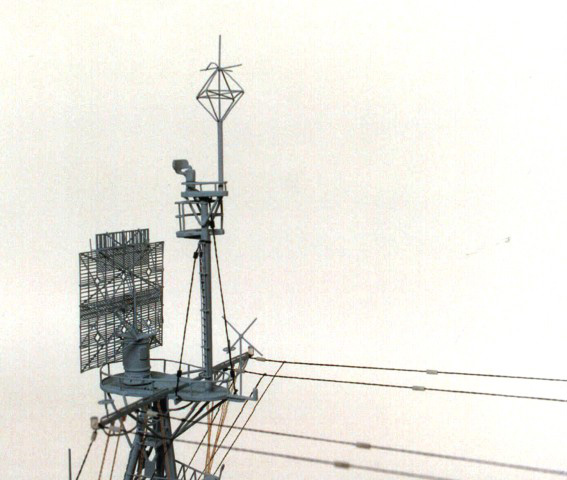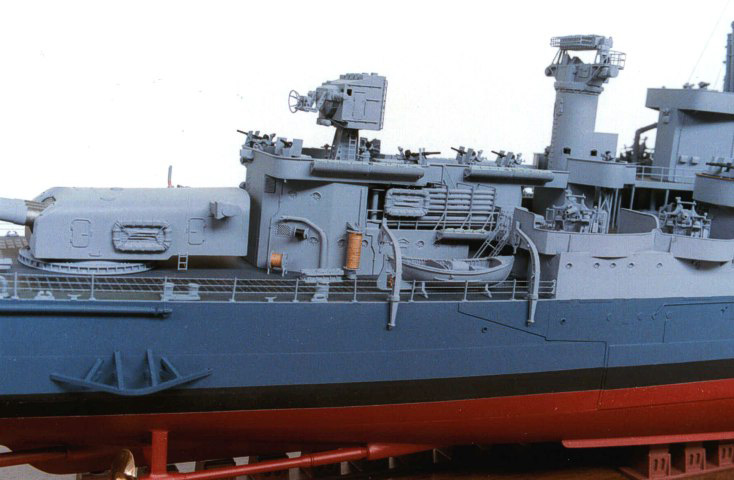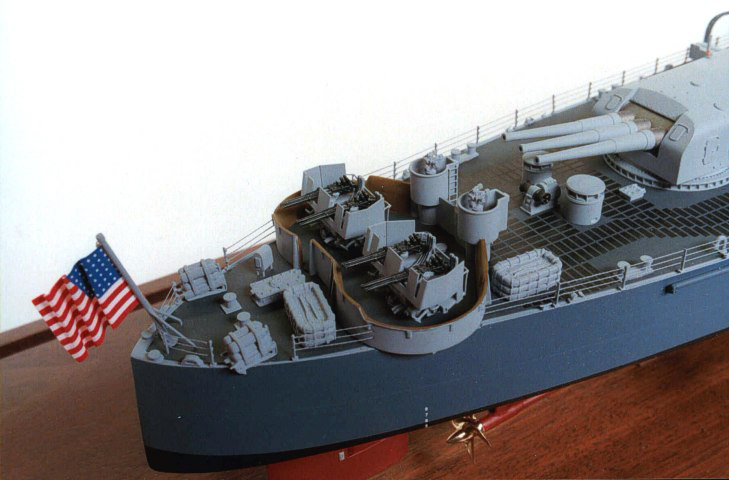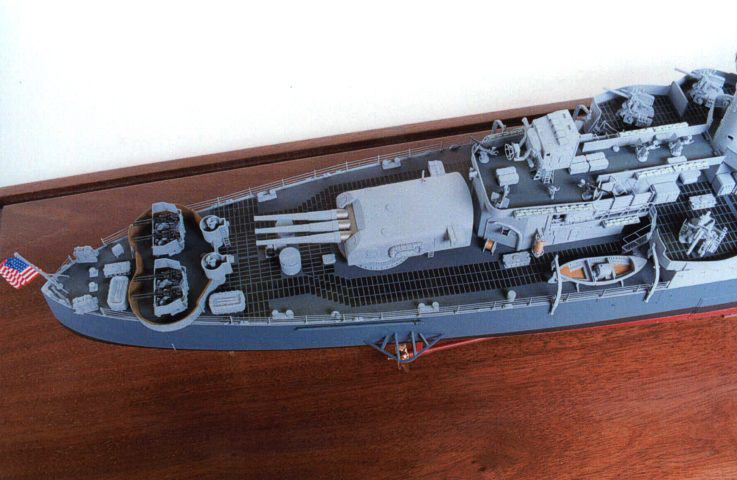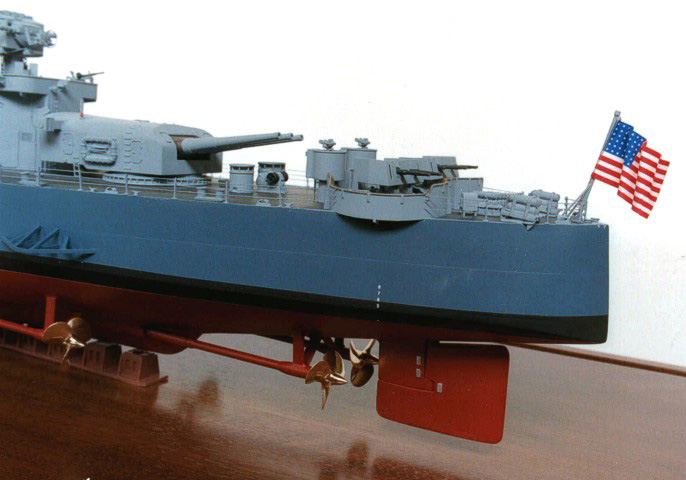Indianapolis
USS Indianapolis
- Scale: 1:192
- Release: 2001
- Limited Edition: 50
- Model Size: 41”L x 5”W x 10.5”H
- Base Type: Black Walnut
- Base/Case Size: 44”L x 12”W x 14”H
- Availability: Sold Out
USS Indianapolis
The last major American warship to be lost during World War II, in the greatest sea disaster in American naval history, was the ship that had just delivered the core of the first atomic bomb to the war zone, the heavy cruiser USS Indianapolis.
The two ships of the Portland-Class were the last American cruisers completed with clipper bows and aircraft hangers between their two stacks. Built in Camden, New Jersey and commissioned in November 1932, Indianapolis (CA 35) was an improved version of the preceding Northampton-Class, displacing 9,800 tons and mounting nine (9) 8-inch guns on her 610-foot hull. Her 107,000 shaft horsepower could sustain 32 knots.
Indianapolis had a distinguished career from the start. As the flagship of the navy’s Scouting Force, she hosted President Roosevelt three (3) times including a state visit to South America in 1936. She was at sea in the Pacific when World War II broke out, then went on to serve in the Aleutian Islands in 1942–43 rather than in the Solomon Islands, as most of her sister pre-war heavy cruisers did.
Afterward, she served as Admiral Spruance’s fifth Fleet flagship and was hit by a kamikaze off Okinawa on March 31, 1945, the day before that island was invaded. Back in California, after her repairs were completed, she received orders to carry parts for the first atomic bombs in a high-speed secret mission to Tinian, 5,000 nautical miles distant, which she reached in the record-setting time of 10 days. After dropping some passengers at nearby Guam, she continued alone, heading for Leyte.
Just after midnight on the overcast night of July 29–30, however, when she was about halfway across the Philippine Sea, Japanese submarine I-58 hit her with two torpedoes. She got off three distress calls, but then rolled over and sank a mere twelve minutes later. Authorities in the Philippines had known of the submarine’s presence (although they had not informed the Indianapolis), heard one of those calls and also intercepted the I-58’s radio message reporting the sinking, but made no report even when Indianapolis became overdue. So for 4½ days, some 900 survivors among her crew of 1,196 drifted without lifeboats, food, water or hope of rescue, succumbing one-by-one to the largest shark attack on record until a scout plane—which was not looking for them—happened to spot the ship’s oil slick. Four hours later, a flying boat arrived, realized it was witnessing a continuing shark attack in progress even then, and began immediate rescue. Comprehensive search operations continued for six days over a radius of 100 miles, but only 316 crewmembers were brought back alive. The first atomic bomb was dropped the next day and Japan surrendered one week later, on August 15.
In December 1945, over the objection of Admirals Nimitz and Spruance, Captain Charles B. McVay was court-martialed—the only commanding officer of any of the 700 ships sunk during the war to be so charged. He was a scapegoat—in a controversial trial where some evidence was suppressed and even the commander of the Japanese submarine gave exonerating testimony – he was convicted for failing to zigzag in good visibility. Although Admiral Nimitz restored him to duty and he retired as a rear admiral in 1949, his career was ruined and he never recovered, taking his own life in 1968.
For 55 years, the USS Indianapolis Survivors Organization sought to establish his innocence until, on October 12, 2000, the US House and Senate passed a bill that cleared Captain McVay of culpability for the loss of his ship and called on the Secretary of the Navy to award a Navy Unit Commendation to the Indianapolis and her final crew. As passage of the legislation did not clear the conviction from Captain McVay’s record, however, the Survivors Organization remains active in seeking to have this action taken.
Fine Art Models
Fine Art Models is proud to present the USS Indianapolis in 1:192 scale, as a tribute to the men who were aboard when the ship was lost. And in 2001, we were honored to have provided one of our models that was used in Discovery Channel’s special entitled: “The Search for the USS Indianapolis.”
Notice a few ways in which our ship models have improved over our previous 1:192 scale models. In the past, for example, we soldered the railing to the stanchions individually. While this was impressive, what we have managed to accomplish on the Indianapolis is a step further – we have found a way to make the stanchions with actual micro eyes. In addition, we found a metallic thread that simulates scale chain, with has a stretch factor, that allows for tight lines (the closer you get, the more authentic it looks).
Also look at the anti-skid pattern on the all-metal decks perfectly placed and exact in every detail. Then there are the four (4) Seagull scout planes, which speak for themselves with their tri-color camouflage and triangle antenna. The folded-wing version even has the latch covers, on the top wings, in the up position. The crane could actually work, as it is rigged and has moving rollers. The wood portion of the deck is laser-cut wood. The Indianapolis is clearly Fine Art Models’ finest 1:192 scale ship model to date.
Each model of the USS Indianapolis comes with an autographed copy of “In Harm’s Way”, the latest account of the sinking of the Indianapolis and the extraordinary story of its survivors, published on April 4, 2001. And, as with all of our models, the USS Indianapolis comes with a black walnut base and leaded glass case.
